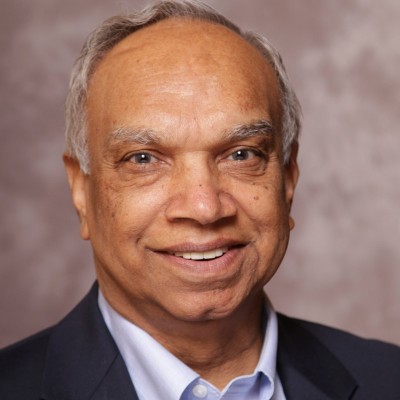Workforce Development
Ramesh Gulati & Bill Hall
Abstract
Big changes are happening in today’s workforce. These changes have nothing to do with downsizing, global competition, or stress; it is the problem of a distinct generation gap. Young people entering the workforce are of diversified background and have much different attitudes about work. They want a life‐work balance. They want to be led, not managed — and certainly not micro‐managed. The new mode is flexibility and informality. A large proportion of our managers of the veteran era have been trained in relatively autocratic and directive methods that don’t sit well with today’s employees. Are we preparing our workforce to meet tomorrow’s need?
Why do so many Reliability / RCM programs fail or don’t get implemented? What are the key obstacles we need to overcome for a successful implementation? Are our people trained – aware of best practices? Do we have the right people available to implement the best practices? This paper will attempt to answer some of these questions and explain why you must implement workforce development.
Introduction
We may have great plans and the best processes, but if we don’t have the people available with the right skills, these plans and processes can’t be implemented or carried out effectively. Developing the people — workforce development — and empowering them to give their best is key to defining the difference between an ordinary company and a great organization. Of course, the processes must be in place to nurture and harness the potential of human capital.
There’s also serious labor shortage right around the corner. According to data from the Bureau of Labor Statistics, there will be more “skilled” jobs available than people to fill them. In addition, people entering the workforce, specifically in the M&R field, lack basic skill sets as well as reading and math capabilities. There is a need to have workforce development programs in every organization to ensure a supply of skilled and talented workers.
What’s Reliability Culture?
Can we define reliability or RCM culture? What does it mean if someone says that organization XYZ has a Reliability Culture? Is there a metric to measure? It’s a touchy – feeling thing and gets really difficult to define and measure. We could see the impact of reliability culture in final outcome or services provided by the organization. Reliability improves the bottom line of an organization because customer needs are met on time and at an affordable cost. In an organization which has a reliability culture, we could observe the following:
- Assets are reliable and available as and when needed ‐ High UPTIME
- Assets are functioning/producing as designed
- Maintenance costs are reasonable
- Plant operates safely
The importance of reliability and implementing best maintenance and reliability practices are discussed at the highest level of the organization.
Most organizations talk about RCM/reliability, but it is treated as “program of the month’ and loses emphasis over time. Changing an existing culture of “run‐to‐failure” and “little attention to PM” to a sustainable reliability culture takes many years and consistent management support and resources. In a reliability culture, PREVENTION of failures becomes an emphasis at every level of the organization. The whole workforce has to be focused on asset reliability.
In reliability culture organization, the workforce ‐ operators, maintainers, engineers, etc. think and act to ensure that assets are available to produce when needed and maintained at reasonable cost. If an asset fails, it gets fixed quickly and root cause determined; and follow‐on actions are taken to prevent future failures. Facility / Asset reliability analysis is performed on a regular basis to increase Uptime. The workforce is trained to practice reliability based concepts, and best practices are implemented on a continuing basis.
Therefore, organizations need to have or prepare their workforce who are familiar with M&R best practices and can be instrumental in creating a sustainable reliability culture.
Employee Life Cycle
An employee life cycle covers the steps employees go through from the time they are hired in an organization until they leave. This life cycle consists of four steps:
- Hire
- Inspire
- Admire
- Retire
Each stage is an important step in keeping employees motivated and productive in the organization.
Understanding the Generation Gap:
There is a shortage of skilled industrial workers, the people who operate and maintain sophisticated assets / systems on the plant floor, as well as engineering and management professionals. This shortage poses a serious threat to our industrial competitiveness. The shortage lies in the demographics as most veterans have left the work place and baby boomers are getting close to their retirement. Predominately four generations of workers co‐exist in today’s workplace. The following list reflects William Strauss and Neil Howe’s organization from their book Generations:
Silent Born between 1925–1942
Baby Boom Born between 1943–1960
Generation X Born between 1961–1981
Generation Y Born between 1982 – 2001
The differences between the generations create many challenges in the workplace. These challenges, which can be negative or positive, often relate to variations in perspective and goals as a result of generational differences. This area gets further complicated because of the age differences between managers and employees. Organizations can’t assume that people of varying ages will understand each other or have the same perspective and goals. In order to be successful, there is a need to understand and value the generational differences and perspectives and turn those negatives into positives.
Skills Development / Training:
The skill level of the maintenance personnel in most organizations today is well below what industry would classify as acceptable. The literacy level of many maintenance personnel is becoming a challenge. New entry‐level employees have shown a noticeable drop in basic math and reading skills. They have also shown a lack of interest in Operations and Maintenance related work.
Today’s assets and systems are increasingly complex. They require an educated and skilled workforce to operate and maintain them effectively. It has been determined by several studies that today’s craft person requires a minimum educational level of 12 years with additional vocational training to meet the work requirements, workforce development is crucial for maintenance personnel.
Numerous studies have also shown that 70–80% of equipment failures are self induced; most of those are a result of human error. All human error failures can’t be blamed on education or skills, but they do make the problem worse.
A well‐developed training program based on job task analysis and maintenance skills assessment can provide the solution to inadequate maintenance skills availability. The training must be focused to produce results as quickly as possible and must also meet an organization’s long‐term goals. Maintenance training, when developed and implemented properly, can help organizations save money, increase productivity and product quality, and improve employee morale.
The training curriculum should include the following but not limited to:
- Regulatory and safety requirements, e.g. OSHA, EPA, FDA
- Technical
- Asset /system — operation and maintenance To provide basic understanding of how an asset or system operates and how it interfaces with utilities and other assets. It may include minimum maintenance needs or operator‐required maintenance.
- Specific repair techniques and technology To provide new repair techniques or technology‐related training, e.g., hydraulic servo valves, vibration, ultrasonic, and laser alignment.
- Professional / workforce development RCM, FMEA, 6‐Sigma tools, blueprint reading, etc.
- Organization specific, i.e. process related — how to write work orders or requests for material, company diversity policy, etc.
Certification and Qualification
Organizations want their people to have a good understanding and appropriate skills in the M&R field in order to help them to become more efficient and effective. How do we know that they, the employees, have the required knowledge? How do we assess that knowledge? Did they comprehend the proper use of M&R tools and best practices during training sessions? Certification is a means to assess required knowledge or set of skills in a specific field.
Why do organizations need to get their people certified? What value does a certification provide? These are the questions raised by many organizations. One answer is “Can we afford not to get certified?” According to the U.S. Department of Labor, Bureau of Labor Statistics Outlook Handbook 2008/9 edition, “Many employers regard certifications as the industry standard.” Certification measures and evaluates an employee’s understanding of a body of knowledge in a specific area with a standard knowledge that has been established by an appropriate industrial or academic body. Most of the certifying organizations are either professional societies or educational institutions. Some of them have their certifying process comply with and approved by the American National Standard Institute (ANSI) and International Standards Organizations (ISO).
Certification in the M&R area, e.g., CMRP by SMRP, or Vibration Analyst X by Vibration
Institute indicates that a successful applicant has the following attributes:
- Demonstrated knowledge in M&R field — concept and implementation
- Equipped with the skills to perform in specific area effectively
Employers of certified employees should be confident that they have individuals or new certified employees being hired who have proven themselves, possess the skill sets necessary for success, and have met a specific certification standard.
Certifications can be grouped in four major classifications:
- Asset / System Level
- M&R Technologies
- Professionals / Managers
- Plant /Facility Level
M&R Professionals Certification
In this category, maintenance and reliability engineers, capital project engineers, designers, managers, and other professionals working in the M&R field are tested for their broad knowledge of M&R.
Two key certifications are available in this category. One is Certified Plant Engineer (CPE) / Certified Maintenance Manager (CMM) offered by the Association of Facility Engineers (AFE). The other is Certified Maintenance and Reliability Professional (CMRP) conducted by the Society of Maintenance and Reliability Professionals Certifying Organization (SMRPCO). AFE and some industrial training companies provide the necessary training for the CPE / CMM test.
The CMRP certification process is ANSI certified. According to ANSI requirements, SMRP/SMRPCO is prohibited from providing any specific training. However, SMRPCO has a study guide available in hard copy format from SMRP headquarters. This guide can be downloaded from their website www.smrp.org/certification free of cost.
CMRP certification was initiated in 2000 and is now recognized as the standard of M&R certification by many organizations worldwide. The certification process evaluates an individual’s skills in the five pillars of knowledge defined by SMRP: Business and Management, Manufacturing/Operations Processes Reliability, Equipment Reliability, People Skills, and Work Management. Many organizations have now started using CMRP certification to assess their employees’ knowledge and then to develop appropriate training programs that help their employees improve their skills.
Succession Planning
Succession planning is another key element of the workforce development process. It is a process of identifying and preparing suitable employees — through mentoring, training, and job rotation — to replace key players in the organization. It involves having the management periodically review their key personnel and those in the next lower level to determine several backups for key positions. This is important because it often takes years of grooming to develop effective managers and leaders.
Leadership Culture
Managers and supervisors should be encouraged to become leaders. Directive, autocratic management style will soon become thing of the past. The leaders of tomorrow will need to be facilitative. Establishing agreed‐upon results with individual performers, the managers will provide needed resources, support, and coaching. Part of the leader’s role will be to help people reach their full potential, then raise the bar to keep them growing.
Leaders inspire, rather than direct. They coach, encourage, and guide. Effective leaders earn agreement with their people about what has to be done. They determine — with their team members — what resources are needed to get the job done. They arrange those resources and then get out of the way so their people can perform. This type of refined leadership is crucial to workforce development.
Conclusions / Summary
The labor shortage will intensify in near future. Finding qualified employees will be difficult. Workers will move easily from job to job in a flow we used to call “job hopping.” The continual shifting will be commonplace. Organizations will be caught unaware until they suddenly lose their best people. It is important to be prepared and have your program in place to retain them if possible, or to have back‐up workers trained and ready to take new responsibility.
It’s very difficult to change our old habits. We are accustomed to fixing things when they breakdown. In fact, some of us enjoy doing that because it gives us a sense of accomplishment. We need to change our thinking and start taking proactive actions. It’s important to educate the workforce including the management in reliability principles and in implementing best maintenance practices. Don’t expect to see any positive results in a short period. It takes many years to build the right culture. Be persistent and you will see the results in organization’s bottom line.
Keep it in mind that it’s people who get things done. Workforce development will prepare them to do the right things.

Ramesh Gulati
Ramesh Gulati is currently Asset Management and Reliability Planning Manager with Aerospace Testing Alliance at Arnold Engineering Development Center (AEDC), Arnold AFB, TN. He supports in providing cost effective maintenance plans and in implementing long term reliability improvement initiatives for DoD’s $ 9 B Aerospace Test Facility. In his newly created position, he is responsible in creating reliability culture across AEDC and building/designing reliability in new systems. Previously he held the position of Manager, Reliability Engineering and other management positions at AEDC. Currently he is also director of Certification and Standards with the Society for Maintenance & Reliability Professionals (SMRP). Ramesh is a Certified Maintenance & Reliability Professional (CMRP) and Certified Reliability Engineer (CRE). He holds BSME, MSIE and a MBA. He is very active in professional societies and has authored many papers in maintenance, productivity and reliability area.
Related Articles

How to Fix the 70/30 Phenomenon

Zen and the Art of Managing Maintenance

Why do maintenance improvement initiatives fail to deliver? (Hedgehog or Fox?)

Why Maintenance Improvement Efforts Fail

TPM and RCM: Whirled Class

Where Do Maintenance Professionals Come From?




